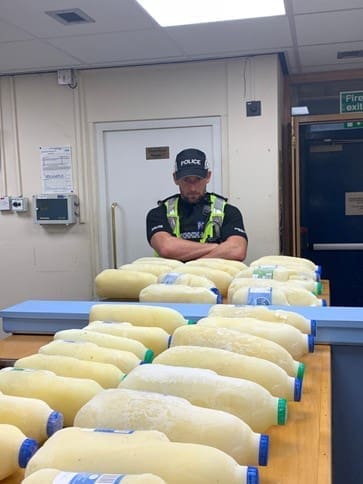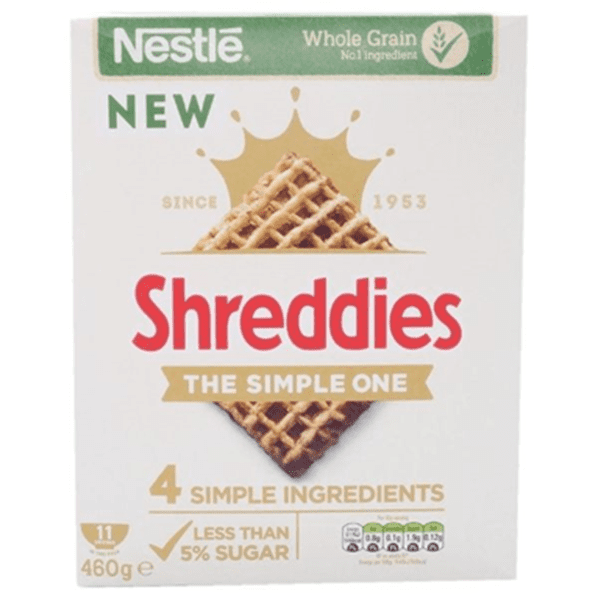The food and drink industry has already experienced huge changes from the impacts of the conflict in Ukraine, to the cost of living crisis. In this blog, we identify three major trends for brands to put on their radar to help them navigate the year ahead.
In 2022, inflation in Europe reached levels not seen for 30 years, meaning that the costs of even basic food and drink have soared. The price of milk alone has soared by 45% in the UK between December 2021 and November 2022.
This led to a recent Twitter post from Glasgow North Police, highlighting the “numerous thefts of milk” and showing an officer standing sternly over 29 four-pint bottles recovered from a freezer. Packs of Lurpak butter have now become so expensive (as much as £9 in the UK) that some stores are security tagging tubs, as they would normally only do for bottles of alcohol.

But the thing is, 2023 will be even worse than 2022. That is when the recession will really start to hit home, unemployment will start to rise and more people will find their incomes become squeezed by rising interest rates. Brands need to be ready, and here are my recommendations:
1. Brands need to learn from previous recessions and prove their value
The lesson from previous recessions is that value does not mean price, but rather is the perceived worth in monetary units of the set of economic, functional, and psychological benefits received by the customer in exchange for the price paid for the product or service provided.
The onus will be on brands to prove their value to the consumer to protect their market share from private label, and especially discounters. Analysis of data from Mintel Global New Products Database (GNPD) shows the scale of the challenge facing brand managers. Over the past year, in Europe, discounter private label food and drink launches cost just €1.27 per 100 litres/grams. This compares to €2.75 for brands. Many consumers will trade down out of choice or need.
So brands must prove to consumers they are worth their price premium. This means helping consumers to save money and being attuned to people’s everyday challenges. In Italy, pasta and bakery producer Barilla has promoted ‘passive cooking’ as a way for its customers to save money on their energy bills. The technique means boiling pasta for two minutes, then turning off the hob and waiting until it is ready. To help with timings, Barilla provides a guide on its website.
Counter-intuitively, recessions are also a time for brands to invest in advertising and innovation, something I outline in my research on how food and drink brands adapted to the Great Recession of 2007-08.
2. Brands need to highlight health benefits – as consumers value healthy food and drink
The pandemic may now be in the rear-view mirror for Europeans, but its legacy has been to remind people of what is really important in life; their health.
To quote the late Rabbi Jonathan Sacks: “We’ve been coasting along for more than half a century in unprecedented affluence, unprecedented freedom, unprecedented optimism. And all of a sudden we are facing the fragility and vulnerability of the human situation.”
Mintel Global Consumer data from August 2022 asked consumers across the world how they defined ‘value’ in food and drink. Respondents rated the most important factor determining good value as ‘added nutritional benefits’, which was chosen by a global average of 57% of adults. This was followed by ‘made with natural ingredients’, and in third place, whether a product ‘is at a lower price than others’. There were regional differences: UK consumers were much more likely than the global average to view ‘low price’ as important. But consumers in most markets are primarily valuing added nutritional benefits, including the UK.
So strong nutritional messaging will be crucial to outperform competitors. A brand that does this really well is Nestlé The Simple One. As Mintel’s 2023 Global Food and Drink Trend ‘Minimalist Messaging’ notes, this means streamlining communication to the essential selling points that are most relevant to consumers and the brand. Simple messaging is important, as for example, over a third of consumers in Germany consider products that make a lot of health claims to be less trustworthy.

3. Brands will need to drive the sustainability agenda
And finally, consumer concerns for their finances will mean they are less likely to engage with, and pay more for, environmentally-friendly food and drink brands in 2023. Even when consumer finances have been healthier (i.e. back in 2019), the majority of Europeans have remained largely disengaged when it comes to saving the planet.
Nor will Gen Z save the day by driving change through activism. As my research shows, this “slacktivist” cohort has been mischaracterised by the media and is less likely to engage in everyday sustainable behaviours than older consumers.
All this means that brands need to drive consumer change rather than waiting for people to catch up. The 2022 Mintel Consulting Sustainability Barometer shows brands how to do this.
The extreme weather events witnessed in 2022, such as the recorded temperature of 47 degrees Celsius in Portugal during July, threaten to be the new normal. This will force consumers to face up to their responsibilities, especially if brands can own the role of climate change agents.
Mintel Senior Trend Consultant, Richard Cope, thinks we will start to see a more knowledgeable and hardened consumer as sustainability comes closer to home. He notes that: “…in many markets we’re seeing an increased sense of personal vulnerability and personal impact — both of which can act as drivers for action.”
How to find more Mintel research
To learn more about what food and drink consumers want and why, or to speak with a member of our Sales team, check out Mintel Food & Drink. To buy a report today, visit the Mintel Store. For access to our free research and insights, subscribe to become a member of the Mintel Spotlight community. Mintel clients should log in now to read Jonny’s full piece “Food and drink brands can learn from 2008-09 recession”.







































